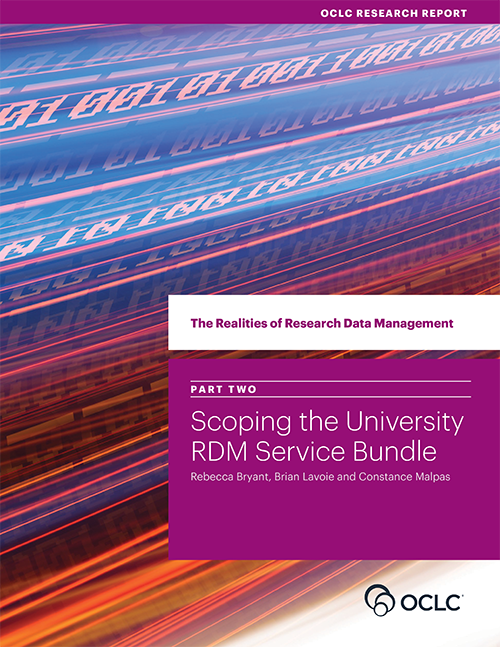The Realities of Research Data Management
The Realities of Research Data Management is a four-part series that explores how research universities are addressing the challenge of managing research data throughout the research lifecycle. In this series, we examine the context, influences, and choices higher education institutions face in building or acquiring RDM capacity—in other words, the infrastructure, services, and other resources needed to support emerging data management practices. Our findings are based on case studies of four institutions: University of Edinburgh (UK), the University of Illinois at Urbana-Champaign (US), Monash University (Australia) and Wageningen University & Research (the Netherlands), in four very different national contexts.
Part Two: Scoping the University RDM Service Bundle
This report explores the nature of the RDM capacity acquired by four research universities in four different national contexts, highlighting key factors that shaped the contours of this capacity, and providing 13 key takeaways that provide useful starting points for institutions as they consider their own RDM services.
The first report explored the background surrounding the emergence of RDM and introduced a simple framework for navigating the RDM service space. In this second report, the authors look at the RDM service bundles of the four universities to better understand how the local RDM service bundle is shaped by the complex interplay of internal and external factors, institutional requirements and local choices.
A few of the key takeaways for libraries:
- RDM is not a monolithic set of services duplicated across universities; it is a customized solution shaped by a range of internal and external factors operating on local decision-making.
- Scoping an RDM service bundle sufficient to meet institutional needs does not necessarily mean implementing the full range of services within the RDM service space.
- Even institutions that scope their RDM service bundles to include services in each of the three components of the RDM service space—Education, Expertise and Curation—can differ in the extent or emphasis placed on a particular component.
- The RDM service bundle is not just a “back-office” component of a university’s research support infrastructure; it often plays an important public-facing role.
- No RDM service bundle is an island—all are connected, to a greater or lesser degree, to the broader, external RDM service ecosystem.
Suggested citation:
Bryant, Rebecca, Brian Lavoie, and Constance Malpas. 2017. Scoping the University RDM Service Bundle. The Realities of Research Data Management, Part 2. Dublin, OH: OCLC Research. https://doi.org/10.25333/C3Z039.
Project staff
Rebecca Bryant
Senior Program Officer
orcid.org/0000-0002-2753-3881
Brian Lavoie
Senior Research Scientist
orcid.org/0000-0002-7173-8753
Constance Malpas
Manager, Strategic Programs
orcid.org/0000-0002-9312-8294
Short URL: oc.lc/realities-RDM
Learn more
Visit our Research Data Management page.
